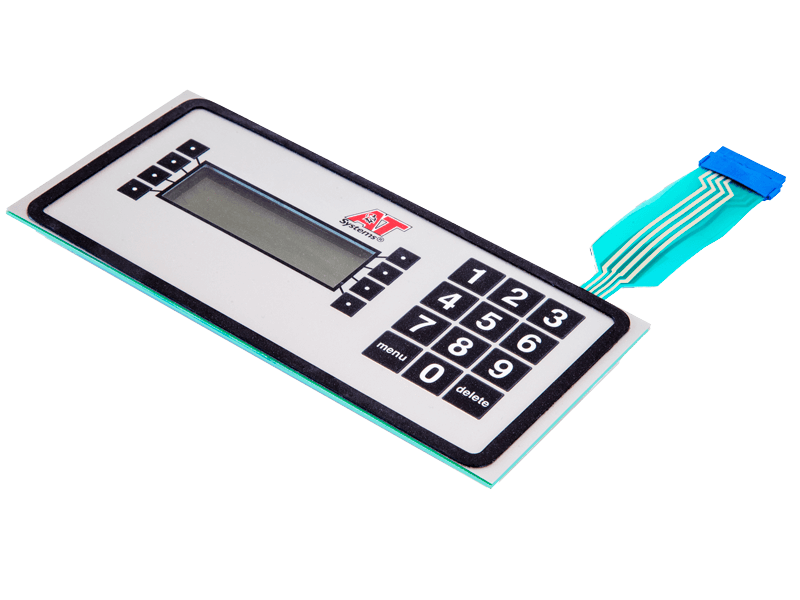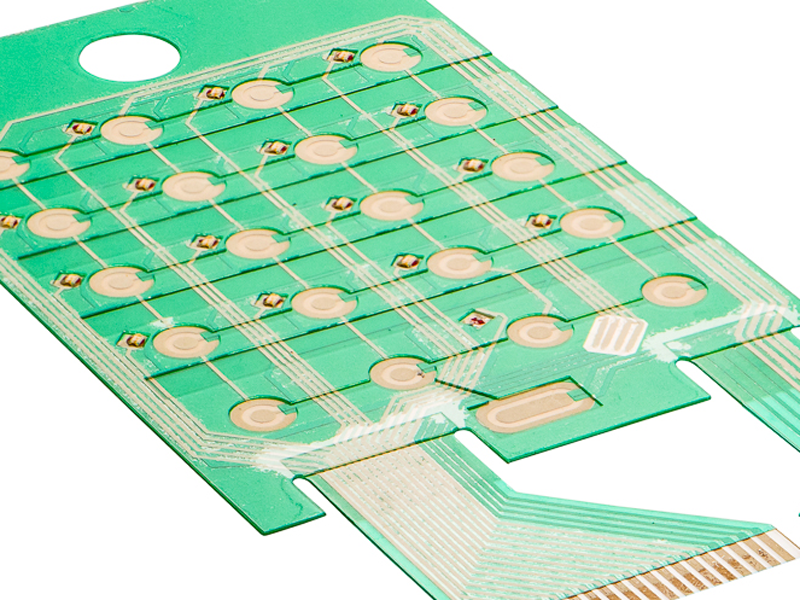Comprehending Membrane Layer Switches: The Key to Dependable and durable Controls
Membrane layer changes represent an essential facet of modern-day user interface layout, mixing performance with resilience in numerous applications. These versatile elements not just facilitate user interaction yet are also engineered to stand up to the roughness of requiring atmospheres, from clinical gadgets to industrial machinery. Recognizing their building, procedure, and the myriad advantages they use is essential for developers and engineers alike. As we check out the details of membrane switches, it ends up being clear that their role in enhancing control systems is both intricate and profound, questioning concerning exactly how best to take advantage of their abilities in future innovations.
What Are Membrane Layer Buttons?
Membrane switches are an innovative remedy in the world of interface modern technology, incorporating performance and layout flawlessly. These gadgets work as an interface in between users and electronic systems, integrating numerous parts into a portable style. Generally created from adaptable, thin layers of products, membrane buttons are designed to reply to touch, allowing users to interact with machinery and digital gadgets efficiently.
The key components of a membrane switch include a published circuit layer, visuals overlay, and a spacer layer that protects against unplanned activation. The graphic overlay can be tailored to show brand name identification or individual preferences, boosting aesthetics while guaranteeing functionality. Membrane layer buttons are typically made use of in various applications, consisting of medical tools, customer electronic devices, and commercial devices, owing to their durability and resistance to environmental elements such as dampness and dirt.
One of the essential advantages of membrane layer switches is their ability to endure deterioration, making them excellent for high-traffic settings. Furthermore, they are lightweight and need minimal area, enabling cutting-edge designs in product development. Generally, membrane layer changes represent a sensible and efficient option for modern electronic user interfaces, marrying modern technology with user-centric layout concepts.

Just How Membrane Switches Over Work
The procedure of membrane layer switches rest on an easy yet reliable mechanism that converts customer input into electronic signals. These switches contain several layers, usually including a visuals overlay, a spacer layer, and a circuit layer. When an individual presses the button, the leading layer deforms, allowing a conductive element in the circuit layer to reach a corresponding conductive pad on the underside of the visuals overlay. This get in touch with shuts the circuit and sends a digital signal to the tool, suggesting that the switch has been activated.
The design of membrane layer buttons can vary, yet they typically incorporate domes or responsive aspects to supply feedback to the customer, improving the overall experience. The materials made use of in membrane layer buttons, such as polyester or polycarbonate, add to their longevity and resistance to ecological factors, consisting of moisture and dirt. The printed circuits are generally encapsulated, which secures them from wear and tear over time.

Benefits of Membrane Switches
One of the primary benefits of membrane layer switches is their flexibility in style, enabling them to be customized to satisfy certain individual demands and visual requirements. This versatility encompasses various industries, where various shapes, dimensions, and shades can be used to boost user communication and visual allure.
Additionally, membrane layer buttons are known for their durability. Built from robust products, they are resistant to dirt, dampness, and physical wear, which substantially prolongs their life expectancy compared to conventional mechanical buttons. This durability makes them especially suitable for high-traffic environments and applications calling for durability.

In addition, membrane buttons supply a structured profile, resulting in a thinner design that can be integrated into different devices without including mass. This feature not only enhances the visual allure but likewise contributes to an extra ergonomic product design.

Applications of Membrane Buttons
Flexible and user-friendly, membrane buttons discover applications throughout a broad variety of industries, including clinical gadgets, customer electronics, and industrial devices. In the clinical field, these buttons are important to devices such as diagnostic devices, patient monitoring systems, and mixture pumps, where reliability and convenience of cleansing are essential. Their capacity to maintain and hold up against harsh settings performance makes more information them optimal for such applications.
In consumer electronic devices, membrane buttons are used in items like microwaves, cleaning makers, and remotes - membrane switch. Their streamlined layout permits for intuitive user interfaces, boosting the total individual experience while offering longevity and resistance to deterioration
Industrial equipment additionally takes advantage of membrane switches, especially in control panels for machinery and automation systems. These buttons offer defense against dust and dampness, guaranteeing regular efficiency in challenging environments. Their adjustable functions enable producers to customize them to specific operational demands, enhancing performance and capability.
Choosing the Right Membrane Layer Change
When choosing a membrane layer button, it is necessary to consider numerous elements that affect efficiency and viability for particular applications. The primary factors to consider include ecological problems, tactile responses, sturdiness, and style specifications.
First, analyze the operating setting; switches subjected to wetness, chemicals, or extreme temperatures require details materials to make certain long life and functionality. Next, examine the requirement for tactile responses. Depending upon customer interaction, some applications might gain from a tactile feedback to verify activation, while others may prefer a non-tactile design for aesthetic factors.
Toughness is one more vital element; membrane layer switches ought to be designed to hold up against regular use, influences, and abrasion. Ensure the selected button can endure the expected lifecycle, particularly in high-usage scenarios.
Conclusion
Finally, membrane layer changes function as essential components in the layout of sturdy and dependable control systems across various markets. Their compact design, combined with durable building and construction and adjustable functions, improves customer communication while ensuring longevity in demanding settings. The convenience of membrane changes enables customized solutions that satisfy details operational demands, strengthening their relevance in contemporary innovation. membrane switch. As markets remain to advance, the value of incorporating effective membrane layer button services can not be overemphasized.
Membrane changes stand for an important element of contemporary user interface layout, blending capability with durability in various applications.Membrane layer switches are an advanced solution in the realm of individual interface modern technology, incorporating performance and design click this link perfectly. Usually constructed from adaptable, slim layers of materials, membrane layer buttons are made to respond to touch, making it possible for individuals to interact with machinery and electronic gadgets successfully.
The layout of membrane switches More Info can vary, however they usually incorporate domes or tactile components to offer feedback to the individual, enhancing the total experience.In final thought, membrane layer changes offer as important parts in the design of durable and trustworthy control systems across numerous sectors.
Comments on “Exploring the Different Types and Features of a Membrane Switch”